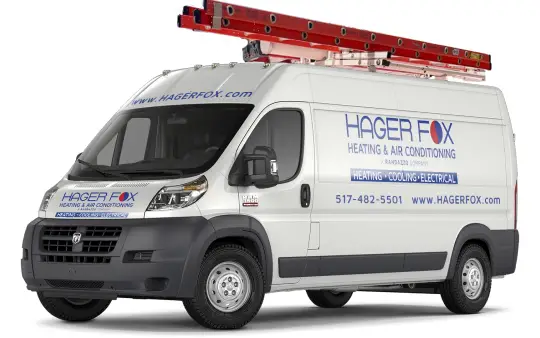Significant Changes to the HVAC Industry – Here’s What You Need to Know.
Nobody likes change. Let’s be honest; It’s uncomfortable, and if you’re like most Americans, you only like change if it saves you money or if it’s convenient. However, life as we know it would be extremely different without change. For example, look at our automobiles. Just think about commuting in a Ford model T; probably not the best if you have an hour commute on I-75 in the winter. I mean, imagine the cost of gas, let alone how long it would take you to get to work! Well, just as the automobile has evolved to become safer, drive farther, and more efficient. So must our heating and cooling equipment.
What’s Changing and Why?
The DOE (Department of Energy), according to the Energy Policy and Conservation Act, must review the Efficiency Standards every six years. Additionally, they must also review the Efficiency Ration Test procedures every seven years to ensure that they’re meeting standards. If the DOE determines improvements can be made and are justified and feasible, they will set new rules and standards to make equipment more efficient.
This year the DOE determined that changes to efficiency, testing metrics, and the grading scale for efficiency needed to change. This means that your provider needs to be up to date with these changes and that you, as a customer, are informed.
Say Goodbye to SEER and HSPF
Starting January 1st, 2023, there will be an update to the “M1 Standard” testing procedure, which will change how products are rated and how new products are tested. These tests include packaged units, high-performance air conditioners, and heat pumps that exceed minimum efficiency levels. The changes to the “M1 Standard” testing procedure will also bring changes to the terminology used to rate your heating and cooling unit’s efficiency.
Starting January 1st, SEER, which stands for Seasonal Energy Efficiency Ration, and HSPF, which stands for Heating Seasonal Performance Factor, will be changed to SEER2 and HSPF2. Which is the only thing that will change as far as the SEER nomenclature is concerned. As a refresher, SEER2 is a ratio used to help determine the maximum level of efficiency you can get from your HVAC unit(s).In that same vein, HSPF can be defined as the ratio used to help determine the maximum level of efficiency you can get from your furnace. All product energy labels will be updated to display this new efficiency nomenclature with no previous reference to the old nomenclature.

Okay, How Will The Change to SEER 2 and HSPF2 Affect You?
Depending on which region you’re in, the changes that were pushed through by the DOE will be different. In the United States, there are three regions: North, Southeast, and Southwest. There are several changes that will be made across the United States, but as a customer that resides in the Northern region, you will only have to be concerned with a few.
Starting January 1st, 2023, the minimum efficiency standard for residential and manufactured housing split air conditioners will increase by one SEER and the minimum split system heat pumps by .5 HSPF. So, as a consumer, you will not be able to buy air conditioning units that have below 14 SEER or heat pumps below 8.2 HSPF. With revised, more accurate testing, a 14 SEER unit is now considered and rated as a 13.4 SEER2, and an 8.8 HSPF is considered a 7.5 HSPF2.
In Michigan, manufacturers are allowed to sell their existing stock of 13 SEER air conditioners, which could mean more savings for you. However, proceed with caution. As the manufacturer starts to phase out its stock of 13 SEER and HSPF 8.2 units, parts, refrigerant, and repairs will start to cost more. This means the company you choose to install, repair, or maintain your HVAC equipment could pass that extra cost along to you.
What Should I do With This Information?
If you’re in need of upgrading your HVAC system, you should pay attention to the information above and make sure that your heating and cooling company is offering you options that will meet the new SEER2 requirement. However, if your HVAC unit is currently a 13 SEER unit, that’s okay. You will not be forced to upgrade your unit. However, you will eventually pay higher prices for repairs and maintenance of that unit.
It is also important to note that if you purchase a 13 SEER or HSPF 8.2 unit within the year, the new standards are enforced (2023); this is currently okay as well. But we have to stress that in the northern region, requirements have changed. And If you’re in need of a new HVAC system,13 SEER units will be harder and, in some cases, impossible to buy.
However, upgrading your HVAC unit(s) isn’t bad. It’s worth noting that you could save more on utility bills by upgrading to a more efficient unit. The office of Energy Efficiency and Renewable Energy states that heating and cooling account for 55% of the energy used in residential homes. This means that having less efficient units could be costing you big.
If you’re looking to upgrade to a new HVAC system that is SEER2 compliant, give us a call today at (517) 482-5501 or schedule online for your free in-home estimate.
Schedule Your Free In-home EstimateRequest Service

Why Choose Hager Fox Heating & Air Conditioning?
For Service That Rocks, Call Hager Fox
- Licensed & insured
- Service all brands, including Lennox, Mitsubishi & Kohler
- Free estimates on replacement quotes & service calls
- Background-checked & NATE-certified technicians
- Financing options & instant rebates
- Committed to excellence
- 100% satisfaction guaranteed



